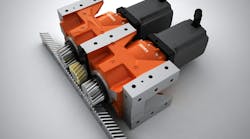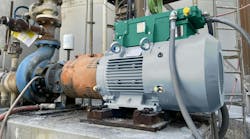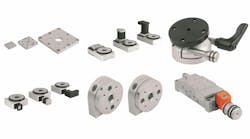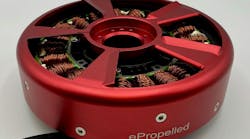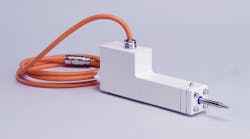With the release of new MULTI Degrees-of-Freedom (MULTI-DOF) encoders, HEIDENHAIN offers machine manufacturers a better way to implement metrology designs to obtain multiple measurements simultaneously and facilitate correcting deviations on the fly. The three encoders include the LIP 6031 Dplus, the GAP 1081, and the MKV 1/9x30.
Traditionally, an encoder is only able to measure deviations along a single axis and although these can be corrected via some controllers, they can still be blind to common but unavoidable effects of guideway error or thermal linear expansion (to name a few) which would cause deflection along multiple axes. Using multiple reader heads allows for the detection of these deflections as in these new products, allowing for the necessary compensation at the inception and ensuring the integrity of the machine.
Users of these high accuracy MULTI-DOF encoders can expect high reproducibility and consistent quality in their systems.
- The LIP 6031 Dplus is based on the standard HEIDENHAIN LIP 6000 linear encoder. In essence, two LIP 6000 encoders have been integrated into a single device to read two graduation tracks on a measuring scale angled at ±45° relative to each other, thereby making it possible to measure in both the main direction and orthogonally to the main direction at a measuring length of ±2 mm.
- The GAP 1081 is the first gap encoder from HEIDENHAIN. Rather than using interferometry for gap measurement, it utilizes HEIDENHAIN’s own encoder technology enabling measurement of the gap between a mirrored scale and the scanning head. Out-of-plane measurement is thus easy to implement in a metrology design.
- HEIDENHAIN’s MKV 1/9x30 electronics enables the bus capabilities of EnDat 3 interface by reading the position values of up to four 1 VPP scanning heads. This is useful for multi-dimensional encoders where the readings from each head can be calculated and sent to the customer’s controller on just a single cable. This also allows a reduction in the number of cables required and prevents the controller from needing to make such calculations.

